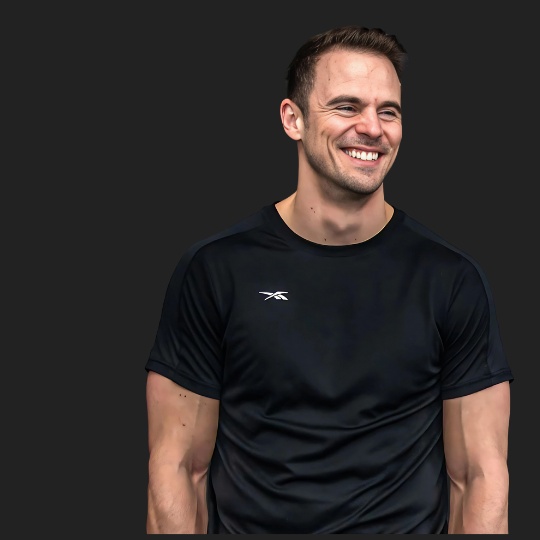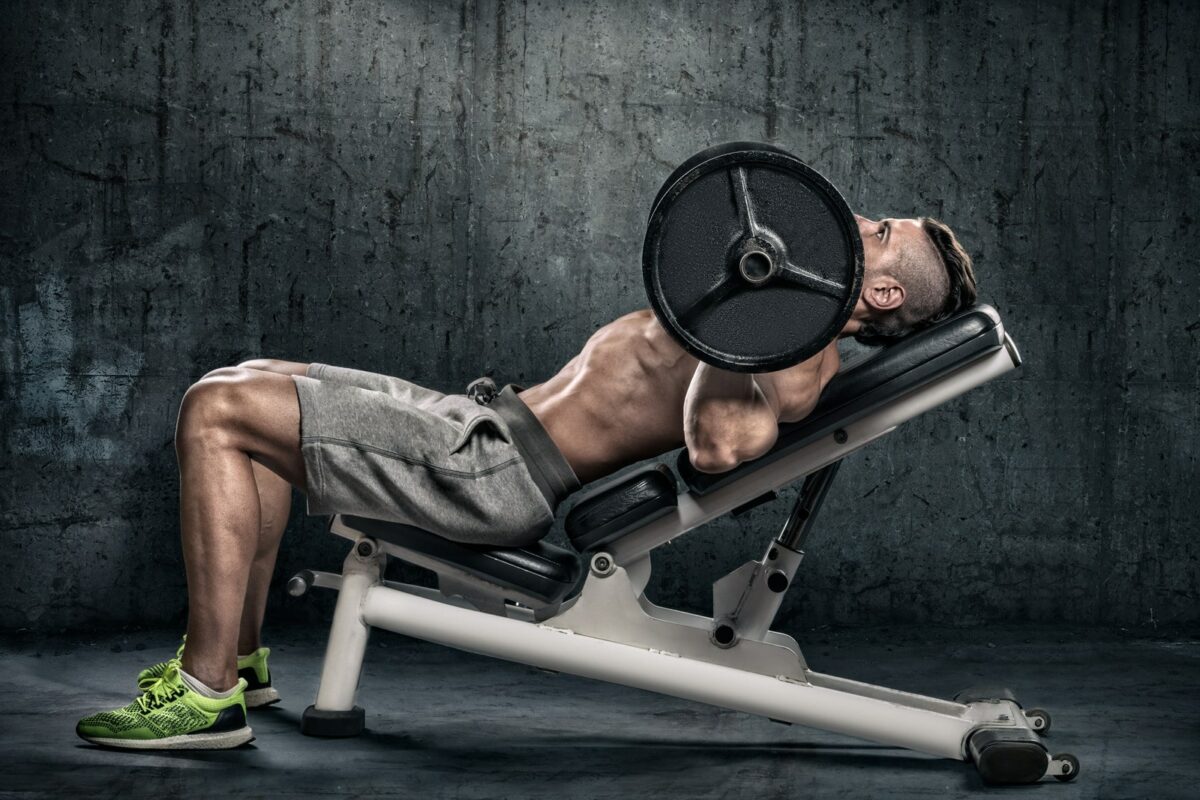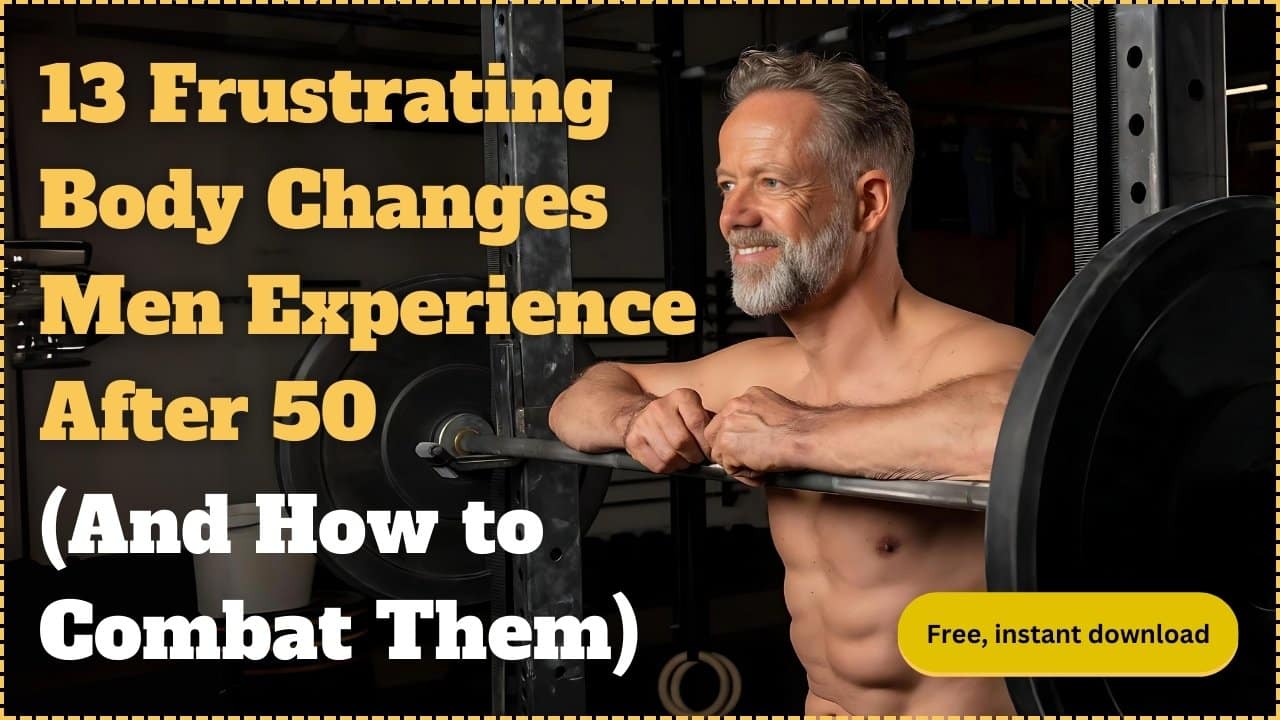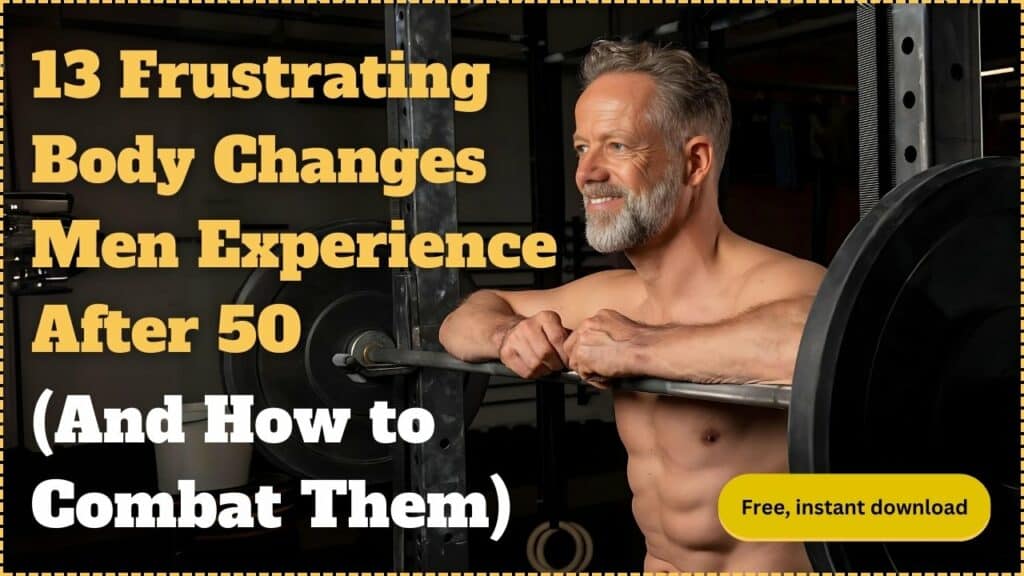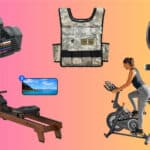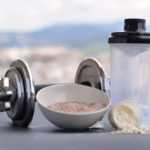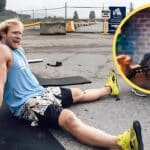Let’s dive deep into push day workouts and learn how to build strength, and sculpt your chest, shoulders, and triceps like never before.
You’ll also find 3 tailored push day routines, suitable for beginners, intermediates, and advanced lifters, ensuring that no matter where you are in your fitness journey, you have the tools you need to succeed.
Lastly, are you curious to find out which push exercises are our favorite and how you can integrate them into your own routine? Let’s find out.
Jump to:
- What is a push day workout?
- 3 Push day Routines for you to choose from
- The 18 Best Push Exercises
- Barbell Bench Press
- Dumbbell Bench Press
- Incline Bench or Dumbbell Press
- Close Grip Bench Press
- Overhead Press
- Dumbbell Shoulder Press
- Behind The Neck Overhead Press
- Landmine Press
- Triceps Pushdown
- Skullcrushers
- Seated Triceps Extensions
- JM Press
- Dumbbell Chest Fly
- Cable Fly
- Dumbbell Lateral Raise
- Side Lateral Raises
- Dips
- Push-Ups
- Crafting Your Own Push Day Routine
- Muscles Targeted During a Push Day
- Common Mistakes on Push Days
- Nutrition and Recovery
- FAQs
What is a push day workout?
A push day workout is a training split that focuses on exercises which engage the body’s “pushing” muscles, primarily the chest, shoulders, and triceps. This approach allows for targeted muscle engagement and efficient training, as these muscle groups naturally work together to perform pushing movements.
Common exercises included in a push day routine are bench press, overhead press, and tricep dips. By isolating these major muscle groups, individuals can work on building strength and muscle mass in a structured and effective manner.
3 Push day Routines for you to choose from
Beginner routine
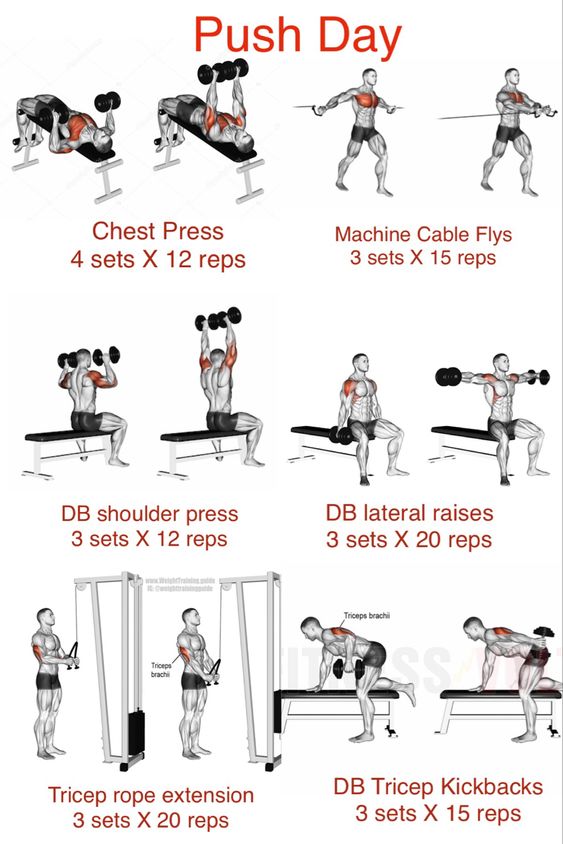
- Chest Press – 4 Sets X 12 Reps
- Machine Cable Flys – 3 Sets X 15 Reps
- Db Shoulder Press – 3 Sets X 12 Reps
- Db Lateral Raises – 3 Sets X 20 Reps
- Tricep Rope Extension – 3 Sets X 20 Reps
- Db Tricep Kickbacks – 3 Sets X 15 Reps
Intermediate routine
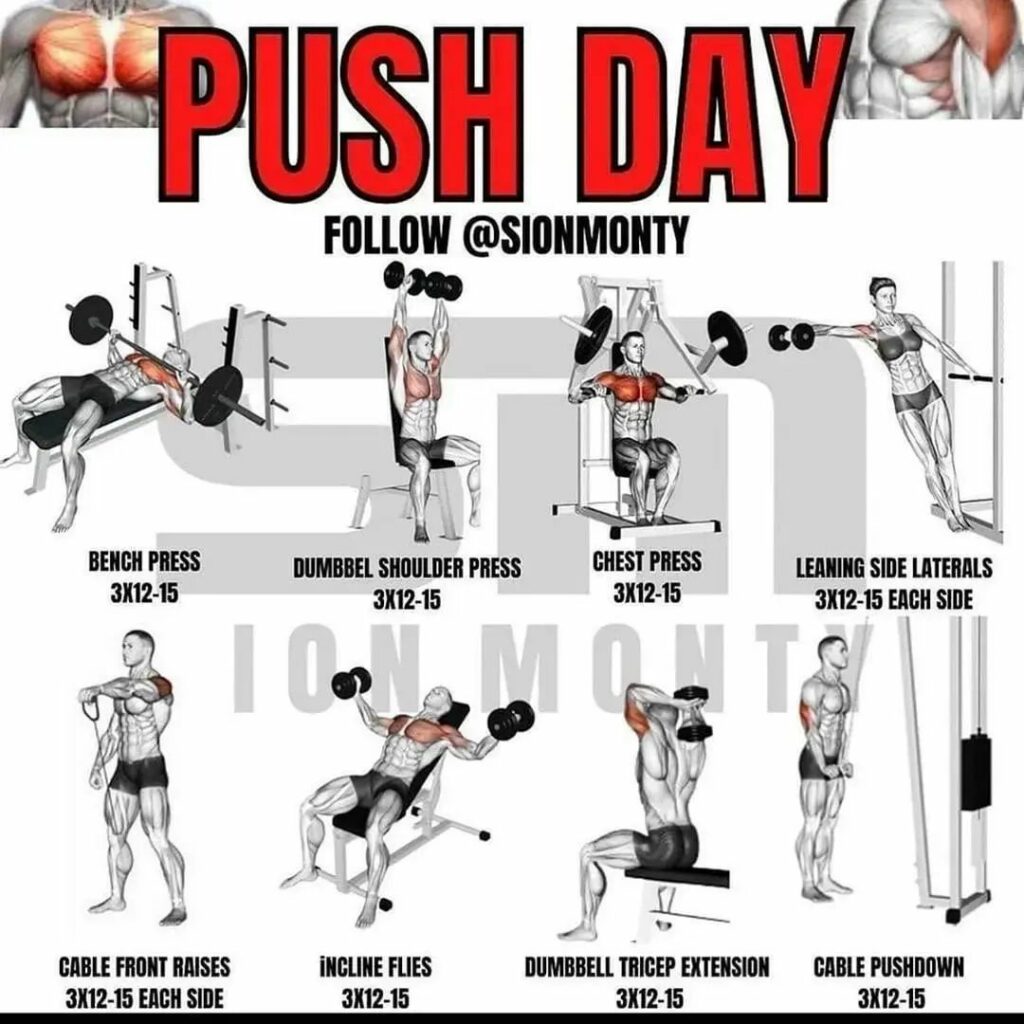
- Bench Press – 3×12-15
- Dumbbell Shoulder Press – 3×12-15
- Chest Press – 3×12-15
- Leaning Side Laterals – 3×12-15 Each Side
- Cable Front Raises – 3×12-15 Each Side
- Incline Flies – 3×12-15
- Dumbbell Tricep Extension – 3×12-15
- Cable Pushdown – 3×12-15
Advanced routine
- Bench Press – 1 near max effort set of 3-5 reps
- Larson Press – 2 sets of 10 reps
- Standing Dumbbell Arnold Press – 3 sets of 8-10 reps
- Cable Press Around with Static PEC Stretch – 2 sets of 12-15 reps on the Cable Press Around2 sets of 30-second hold on the Static PEC Stretch
- Crossbody Cable Y Rays – 3 sets of 12-15 reps
- Squeeze Only Tricep Press Down Superset with Stretch Only Overhead Tricep Extension – 3 sets of 8 reps on the Squeeze Only Tricep Press Down3 sets of 8 reps on the Stretch Only Overhead Tricep Extension
- Crossbody Tricep Extension – 2 sets of 10-12 reps
The 18 Best Push Exercises
As you hit your next push day, here are the best 18 exercises for you to choose from. I’ll give you tips later on on how, and when, to choose each exercise.
Bench Press Variations:
Barbell Bench Press

The barbell bench press is a fundamental weightlifting exercise that primarily targets the pectoralis major, deltoids, and triceps. It’s a staple in bodybuilding, powerlifting, and general fitness routines, known for its effectiveness in building upper body strength and muscle mass.
The barbell bench press is often referred to as the “king of upper body exercises,” and for good reason. It engages multiple muscle groups, allowing you to lift heavier weights and achieve greater muscle activation compared to other upper body exercises.
Incorporating the barbell bench press into your routine will not only develop a strong and muscular chest, but also improve your pushing strength, which is essential for various daily activities and sports.
How to do Barbell Bench Press
- Start by lying flat on a bench with your feet firmly planted on the ground.
- Grip the barbell with your hands slightly wider than shoulder-width apart, palms facing away from you.
- Lower the barbell to your chest, keeping your elbows at a 90-degree angle.
- Press the barbell back up to the starting position, fully extending your arms.
- Repeat for the desired number of reps.
Alternative Exercises
- Dumbbell Bench Press (using dumbbells instead of a barbell)
- Incline Bench Press (targeting the upper chest)
- Decline Bench Press (targeting the lower chest)
- Push-Ups (a bodyweight alternative)
- Machine Chest Press (using a chest press machine)
Dumbbell Bench Press

The dumbbell bench press is a versatile and effective exercise that targets the pectoralis major, deltoids, and triceps, similar to the barbell bench press, but with the added benefit of a greater range of motion and individual arm movement. This exercise is perfect for those looking to build upper body strength, improve muscle balance, and increase muscle mass.
The dumbbell bench press is a great alternative to the barbell bench press, as it allows for a more natural movement of the arms and shoulders, reducing the risk of injury. It’s also an excellent option for those who may not have access to a barbell or are looking for a way to add variety to their workout routine.
Incorporating the dumbbell bench press into your routine will not only develop a strong and muscular chest, but also improve your pushing strength and overall upper body functionality.
How to do Dumbbell Bench Press
- Start by sitting on a flat bench with a dumbbell in each hand, resting on your thighs.
- Lower yourself down onto the bench, bringing the dumbbells to the sides of your chest, with your palms facing forward.
- Press the dumbbells up towards the ceiling, fully extending your arms.
- Lower the dumbbells back down to the starting position, ensuring a full range of motion.
- Repeat for the desired number of reps.
Alternative Exercises
- Barbell Bench Press (using a barbell instead of dumbbells)
- Incline Dumbbell Bench Press (targeting the upper chest)
- Decline Dumbbell Bench Press (targeting the lower chest)
- Push-Ups (a bodyweight alternative)
- Chest Flys (using dumbbells to target the chest from a different angle)
Incline Bench or Dumbbell Press
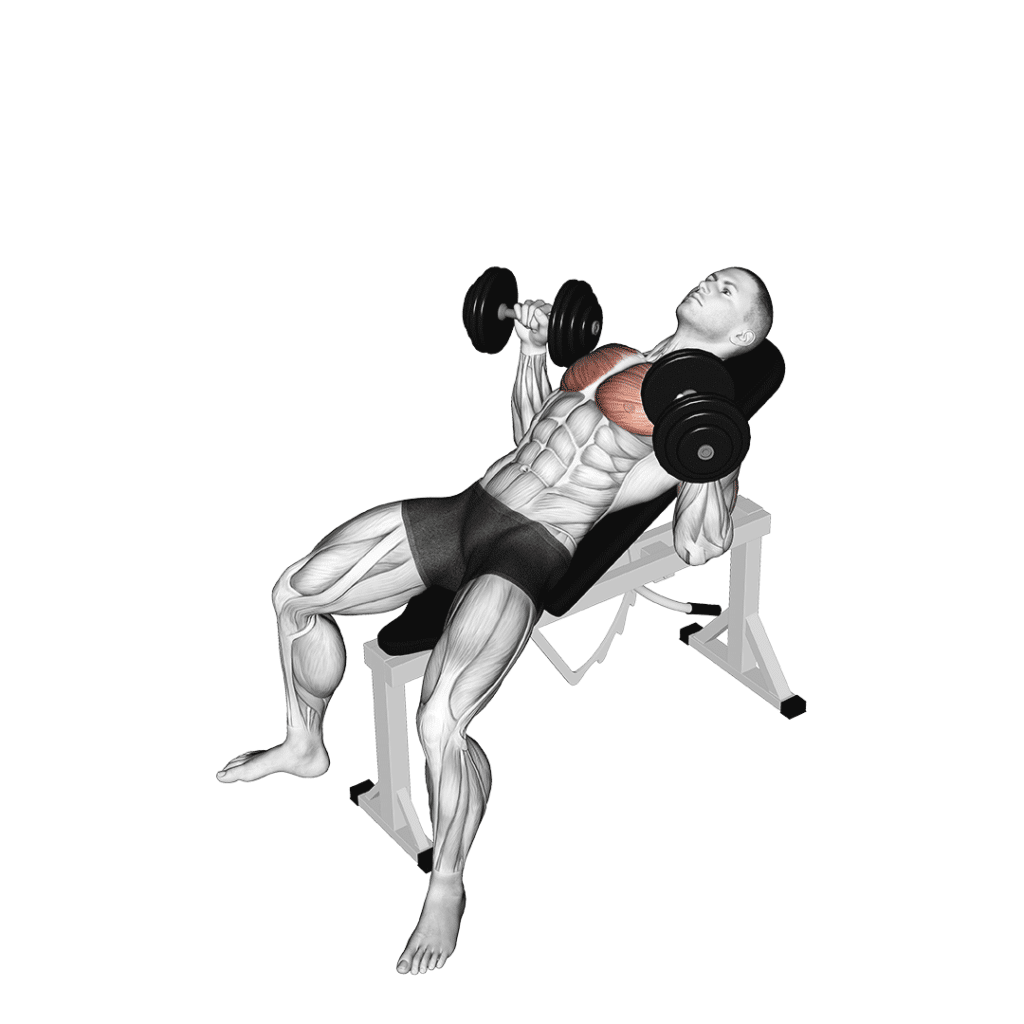
The incline bench press is a fundamental exercise that targets the upper chest, shoulders, and triceps. By adjusting the angle of the bench, you can place more emphasis on the upper pectoral muscles, creating a balanced and well-defined chest. This exercise is a must-have in your push day routine, as it complements the flat bench press and adds variety to your upper body workout days.
Incline bench press is a versatile exercise that can be performed with barbells, dumbbells, or even machines. It’s a great way to target the upper chest and shoulders, helping to build a strong and muscular upper body.
The incline bench press is shown to result in significantly more muscle growth in the upper pecs compared to the flat bench press.
Jeff Nippard
How to do Incline Press
- Set the bench to an incline of about 15-30 degrees.
- Sit on the bench with your feet flat on the ground and your back firmly against the bench.
- If using a barbell, grasp the bar with your hands slightly wider than shoulder-width apart. If using dumbbells, hold a dumbbell in each hand at shoulder level.
- Lower the barbell or dumbbells to your upper chest, keeping your elbows at a 90-degree angle.
- Press the barbell or dumbbells back up to the starting position, fully extending your arms.
- Repeat for the desired number of reps.
Alternative Exercises
- Flat Bench Press (targets the middle chest)
- Decline Bench Press (targets the lower chest)
- Dumbbell Flyes (isolates the chest muscles)
- Cable Crossovers (targets the inner chest)
- Push-Ups (a bodyweight alternative)
Close Grip Bench Press
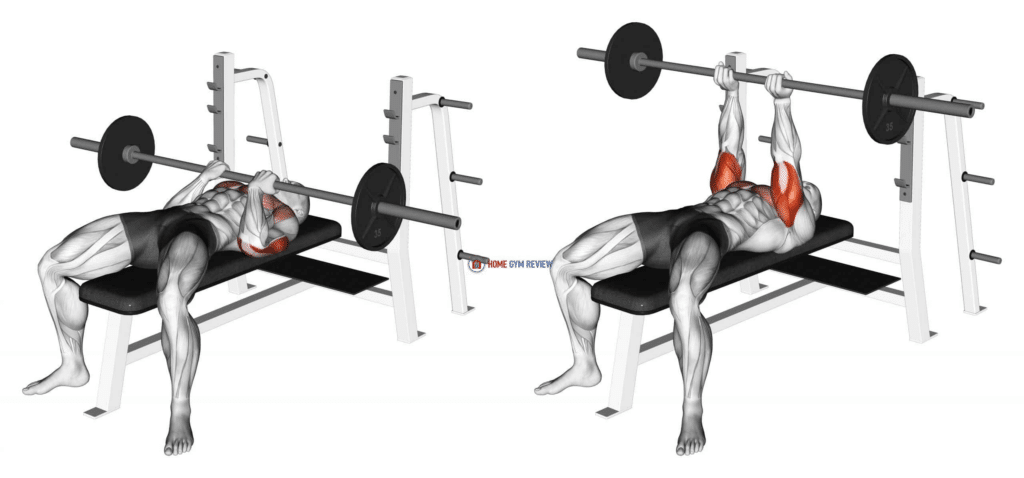
The close grip bench press is a fantastic exercise that primarily targets the triceps, while also engaging the chest and shoulders. This variation of the traditional bench press is perfect for those looking to build strength and definition in their triceps, as the closer grip places more emphasis on these muscles.
Incorporating the close grip bench press into your routine is a great way to add variety to your upper body workouts and can be a game-changer for improving your overall pushing strength. It’s also a valuable exercise for athletes involved in sports that require strong and powerful triceps.
How to do Close Grip Bench Press
- Lie on a flat bench with your feet flat on the ground and your back firmly against the bench.
- Grasp the barbell with your hands placed closer than shoulder-width apart, palms facing away from you.
- Lower the barbell to your chest, keeping your elbows close to your body.
- Press the barbell back up to the starting position, fully extending your arms.
- Repeat for the desired number of reps.
Alternative Exercises
- Tricep Dips (targets the triceps and chest)
- Skull Crushers (isolates the triceps)
- Overhead Tricep Extensions (targets the triceps and shoulders)
- Push-Ups with a Close Grip (a bodyweight alternative)
- Tricep Kickbacks (isolates the triceps)
Overhead Press Variations:
Overhead Press

The overhead press is a fundamental strength exercise that targets the shoulders, triceps, and upper chest. It’s an essential movement for developing strong and powerful shoulders, as well as improving overall upper body strength.
Commonly seen in strength training programs, Crossfit WODs, and bodybuilding routines, the overhead press is a versatile exercise that can be performed with a barbell, dumbbells, or kettlebells. It’s a must-have in your shoulder day arsenal, as it not only builds muscle but also enhances shoulder stability and mobility.
How to do Overhead Press
- Stand with your feet shoulder-width apart and your core engaged.
- Grasp the barbell with your hands slightly wider than shoulder-width apart, palms facing away from you.
- Bring the barbell to shoulder height, with your elbows pointing forward.
- Press the barbell overhead, fully extending your arms and locking out your elbows.
- Lower the barbell back to shoulder height, ensuring a full range of motion.
- Repeat for the desired number of reps.
Alternative Exercises
- Seated Overhead Press (performed while sitting on a bench)
- Dumbbell Shoulder Press (using dumbbells instead of a barbell)
- Arnold Press (a variation that combines the shoulder press with rotation)
- Push Press (using leg drive to help press the weight overhead)
- Lateral Raises (isolates the lateral deltoids)
Dumbbell Shoulder Press
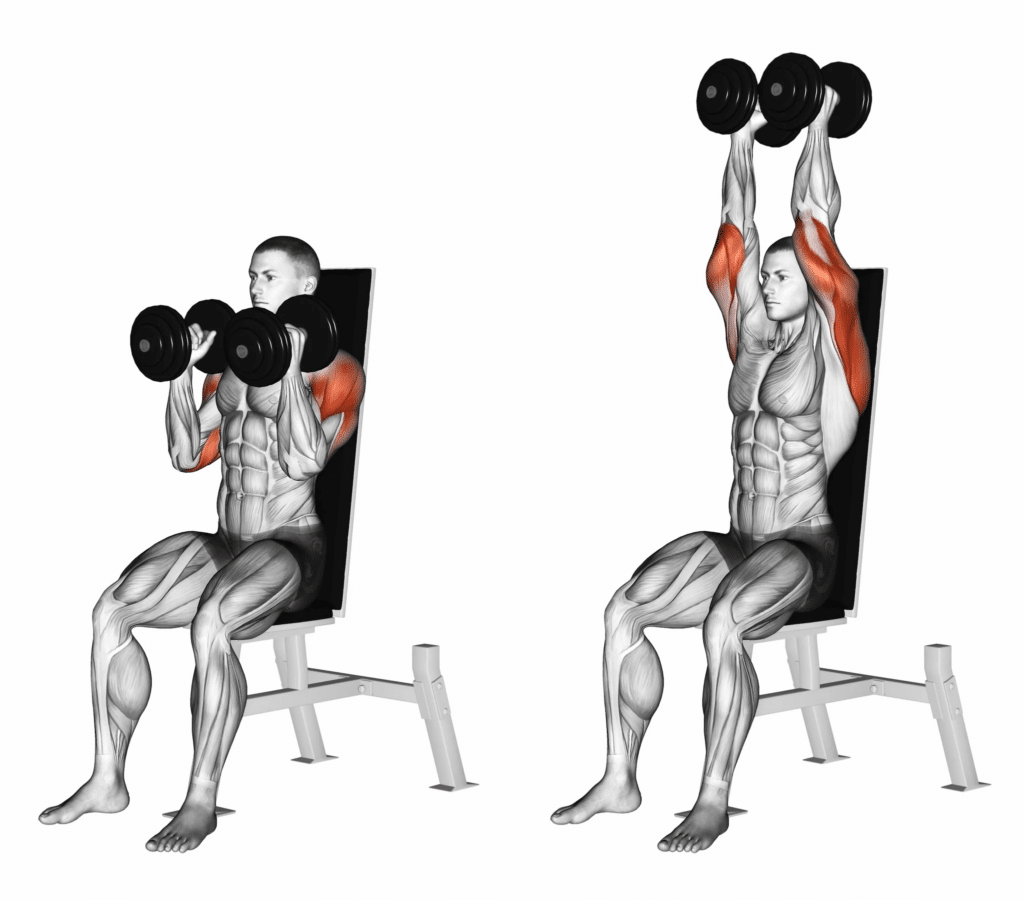
The dumbbell shoulder press is a versatile and effective exercise that targets the shoulders, triceps, and upper chest. It’s a staple in many strength training programs, Crossfit WODs, and bodybuilding routines, known for its ability to build strong, sculpted shoulders.
Incorporating the dumbbell shoulder press into your routine not only adds variety but also allows for a greater range of motion compared to the barbell press. This exercise is essential for anyone looking to enhance their upper body strength, improve shoulder stability, and achieve a well-rounded physique.
How to do Dumbbell Shoulder Press
- Stand with your feet shoulder-width apart, holding a dumbbell in each hand at shoulder height, palms facing forward.
- Engage your core and keep your back straight.
- Press the dumbbells overhead, fully extending your arms and bringing the weights together at the top.
- Lower the dumbbells back to shoulder height, ensuring a full range of motion.
- Repeat for the desired number of reps, maintaining control throughout the movement.
Alternative Exercises
- Seated Dumbbell Shoulder Press (performed while sitting on a bench)
- Arnold Press (a variation that combines the shoulder press with rotation)
- Lateral Raises (targets the lateral deltoids)
- Front Raises (targets the anterior deltoids)
- Shrugs (targets the trapezius muscles)
Behind The Neck Overhead Press

The Behind The Neck Overhead Press is a powerful exercise that targets the shoulders, triceps, and upper traps. It’s a variation of the traditional overhead press and is often included in strength training programs, Crossfit WODs, and bodybuilding routines.
Incorporating the Behind The Neck Overhead Press into your routine can help to develop strong, sculpted shoulders and improve overall upper body strength. However, it’s important to note that this exercise may not be suitable for everyone, especially those with shoulder mobility issues or injuries.
How to do Behind The Neck Overhead Press
- Stand with your feet shoulder-width apart, holding a barbell with a wide grip, resting on your upper traps.
- Engage your core and keep your back straight.
- Press the barbell overhead, fully extending your arms.
- Lower the barbell back to the starting position, ensuring a full range of motion.
- Repeat for the desired number of reps, maintaining control throughout the movement.
Alternative Exercises
- Traditional Overhead Press (barbell pressed from the front of the neck)
- Dumbbell Shoulder Press (using dumbbells instead of a barbell)
- Arnold Press (a variation that combines the shoulder press with rotation)
- Lateral Raises (targets the lateral deltoids)
- Front Raises (targets the anterior deltoids)
Landmine Press

The Landmine Press is a versatile and effective exercise that targets the shoulders, triceps, and core. It’s a great alternative to traditional overhead presses, especially for those who may have shoulder issues or limitations. The Landmine Press can be included in strength training programs, Crossfit WODs, and functional fitness routines.
Incorporating the Landmine Press into your routine can help to develop strong, sculpted shoulders, improve core stability, and enhance overall upper body strength. It’s a must-have in your shoulder day arsenal.
How to do Landmine Press
- Load one end of a barbell and secure the other end in a landmine attachment or corner.
- Stand with your feet shoulder-width apart, holding the loaded end of the barbell at shoulder height with one hand.
- Engage your core and keep your back straight.
- Press the barbell overhead, fully extending your arm.
- Lower the barbell back to the starting position, ensuring a full range of motion.
- Repeat for the desired number of reps, then switch arms.
Alternative Exercises
- Standing Dumbbell Shoulder Press (using dumbbells instead of a barbell)
- Seated Barbell Shoulder Press (performed while seated on a bench)
- Arnold Press (a variation that combines the shoulder press with rotation)
- Lateral Raises (targets the lateral deltoids)
- Front Raises (targets the anterior deltoids)
Isolation Triceps:
Triceps Pushdown

The Triceps Pushdown is a classic exercise that targets the triceps brachii, the large muscle on the back of the upper arm. This exercise is a staple in bodybuilding routines, Crossfit WODs, and strength training programs, helping to build strong, defined arms.
Incorporating Triceps Pushdowns into your routine can help to improve arm strength, enhance muscle definition, and support overall upper body development. It’s a must-have in your arm day arsenal.
How to do Triceps Pushdown
- Attach a straight or angled bar to a high pulley machine and set the weight you want to use.
- Stand facing the machine with your feet shoulder-width apart.
- Grab the bar with an overhand grip, hands shoulder-width apart.
- Keep your elbows close to your sides and your upper arms stationary.
- Push the bar down by extending your elbows until your arms are fully straight.
- Pause at the bottom, then slowly return to the starting position, controlling the weight as you go.
- Repeat for the desired number of reps.
Alternative Exercises
- Overhead Triceps Extension (using a dumbbell or barbell)
- Dips (using parallel bars or a bench)
- Skull Crushers (lying on a bench and using a barbell or dumbbells)
- Close-Grip Bench Press (using a barbell)
- Kickbacks (using dumbbells)
Skullcrushers

Skullcrushers, also known as lying triceps extensions, are a powerful exercise that targets the triceps brachii. This exercise is a favorite among bodybuilders, Crossfit athletes, and those looking to build serious arm strength.
Incorporating Skullcrushers into your routine can help to sculpt strong, defined triceps, while also improving overall arm strength and stability. It’s a must-have in your arm day arsenal.
How to do Skullcrushers
- Lie on a flat bench with a barbell or EZ curl bar held above your chest, hands shoulder-width apart.
- Keep your upper arms stationary, and hinge at the elbows to lower the bar towards your forehead.
- Keep your elbows in and your core engaged throughout the movement.
- Once the bar is just above your forehead, extend your elbows to return the bar to the starting position.
- Squeeze your triceps at the top of the movement before starting the next rep.
- Repeat for the desired number of reps.
Alternative Exercises
- Overhead Triceps Extension (using a dumbbell or barbell)
- Triceps Pushdown (using a cable machine)
- Dips (using parallel bars or a bench)
- Close-Grip Bench Press (using a barbell)
- Kickbacks (using dumbbells)
Seated Triceps Extensions
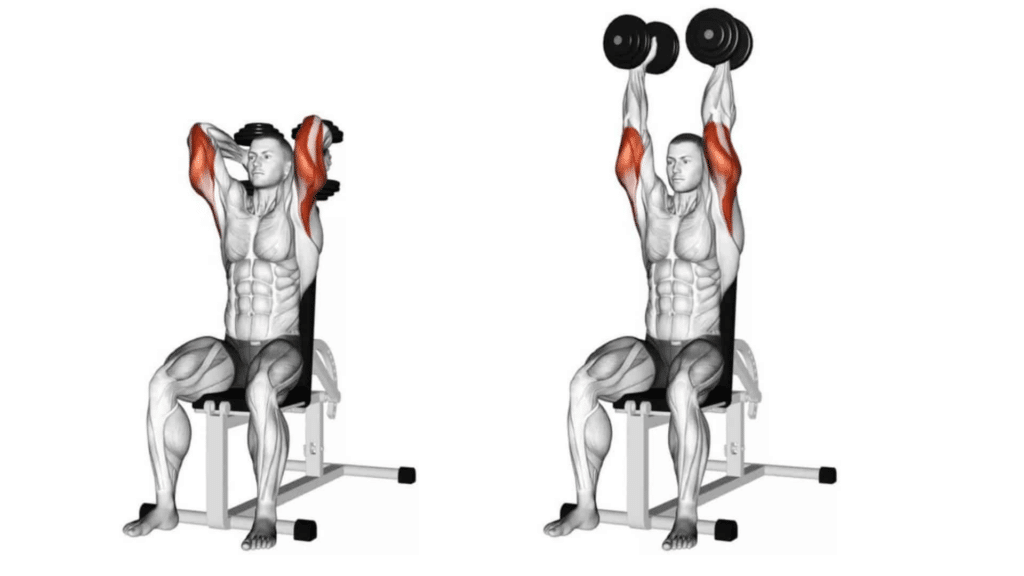
Seated Triceps Extensions are a fantastic isolation exercise that targets the triceps brachii, the large muscle on the back of the upper arm. This exercise is a staple in the routines of bodybuilders, Crossfit athletes, and anyone looking to develop strong, well-defined arms.
Incorporating Seated Triceps Extensions into your routine will not only help to sculpt your triceps, but also improve overall arm strength and stability. It’s a must-have in your arm day arsenal.
How to do Seated Triceps Extensions
- Sit on a flat bench or chair with a dumbbell held in both hands, arms fully extended above your head.
- Keep your upper arms stationary and hinge at the elbows to lower the dumbbell behind your head.
- Keep your elbows in and your core engaged throughout the movement.
- Once the dumbbell is just below the level of your head, extend your elbows to return the dumbbell to the starting position.
- Squeeze your triceps at the top of the movement before starting the next rep.
- Repeat for the desired number of reps.
Alternative Exercises
- Standing Triceps Extension (using a dumbbell or barbell)
- Triceps Pushdown (using a cable machine)
- Skullcrushers (using a barbell or EZ curl bar)
- Close-Grip Bench Press (using a barbell)
- Dips (using parallel bars or a bench)
JM Press

The JM Press is a unique exercise that combines elements of the skullcrusher and the close-grip bench press to target the triceps. Named after its creator, powerlifter J.M. Blakley, this exercise is a favorite among strength athletes and bodybuilders for its ability to build massive triceps.
Incorporating the JM Press into your routine will not only add size and strength to your triceps, but also improve your performance in other pressing movements. It’s a must-have in your arm day arsenal.
How to do JM Press
- Lie on a flat bench with a barbell racked above you.
- Grasp the barbell with a close grip, hands about shoulder-width apart.
- Lower the barbell towards your neck, keeping your elbows in and your forearms perpendicular to the floor.
- As the barbell approaches your neck, shift your elbows slightly forward to allow the barbell to clear your head.
- Press the barbell back to the starting position, fully extending your arms.
- Repeat for the desired number of reps.
Alternative Exercises
- Close-Grip Bench Press
- Skullcrushers
- Triceps Dips
- Triceps Pushdowns
- Overhead Triceps Extensions
Fly Variations:
Dumbbell Chest Fly

The dumbbell chest fly is a classic exercise that targets the chest, shoulders, and arms, helping to build a strong and sculpted upper body. It’s a staple in bodybuilding routines and is perfect for isolating the pectoral muscles, creating that sought-after chest definition.
Incorporating dumbbell chest flys into your routine will not only enhance the aesthetics of your chest, but also improve your strength and stability in other pressing movements. It’s a must-have in your chest day arsenal.
How to do Dumbbell Chest Fly
- Lie on a flat bench with a dumbbell in each hand, palms facing each other.
- Extend your arms straight up above your chest, keeping a slight bend in your elbows.
- Lower the dumbbells out to the sides in a wide arc until you feel a stretch in your chest.
- Bring the dumbbells back to the starting position, squeezing your chest muscles at the top of the movement.
- Repeat for the desired number of reps.
Alternative Exercises
- Cable Flys
- Pec Deck Machine Flys
- Incline Dumbbell Flys
- Decline Dumbbell Flys
- Chest Press Machine
Lateral Raises:
Cable Fly

The cable fly is an effective exercise that targets the chest, shoulders, and arms, helping to sculpt a strong and defined upper body. It’s a versatile movement that can be adjusted to hit different parts of the chest, making it a staple in bodybuilding routines and strength training programs.
Incorporating cable flys into your routine will not only enhance the aesthetics of your chest, but also improve your overall upper body strength and stability. It’s a must-have in your chest day arsenal.
How to do Cable Fly
- Set the pulleys on a dual cable machine to chest height and select the desired weight.
- Stand in the center of the machine with your feet shoulder-width apart and a slight bend in your knees.
- Grab the handles with your palms facing forward and arms extended out to the sides.
- Bring the handles together in front of you in a hugging motion, keeping a slight bend in your elbows.
- Squeeze your chest muscles at the top of the movement, then slowly return to the starting position.
- Repeat for the desired number of reps.
Alternative Exercises
- Dumbbell Fly
- Pec Deck Machine Fly
- Incline Cable Fly
- Decline Cable Fly
- Chest Press Machine
Dumbbell Lateral Raise

The dumbbell lateral raise is a fundamental exercise that targets the deltoids, specifically the lateral or “middle” part, contributing to a broader shoulder appearance. It also engages the traps and the upper back, making it a versatile upper body exercise.
Often considered a staple in bodybuilding and strength training programs, dumbbell lateral raises are essential for developing well-rounded shoulders and enhancing overall upper body aesthetics.
Incorporating dumbbell lateral raises into your routine will not only contribute to a more V-shaped torso but also improve shoulder health and stability, making it a must-have in your shoulder day arsenal.
How to do Dumbbell Lateral Raises
- Stand with your feet shoulder-width apart, holding a dumbbell in each hand at your sides, palms facing your body.
- Keep a slight bend in your elbows and engage your core.
- Slowly lift the dumbbells to the side until your arms are parallel to the floor, keeping the slight bend in your elbows.
- Pause at the top of the movement, then slowly lower the dumbbells back to the starting position.
- Repeat for the desired number of reps.
Alternative Exercises
- Cable Lateral Raises
- Machine Lateral Raises
- Front Raises
- Upright Rows
- Shoulder Press
Bodyweight variations:
Side Lateral Raises

Side lateral raises are a fundamental exercise that targets the deltoids, specifically the lateral or “middle” part, contributing to a broader shoulder appearance. This exercise also engages the traps and the upper back, making it a versatile upper body movement.
Often considered a staple in bodybuilding and strength training programs, side lateral raises are essential for developing well-rounded shoulders and enhancing overall upper body aesthetics.
Using a combination of slow eccentrics and constant tension reps on machine lateral raises helps people who struggle to feel their side delts working.
Jeff Nippard
How to do Side Lateral Raises
- Stand with your feet shoulder-width apart, holding a dumbbell in each hand at your sides, palms facing your body.
- Keep a slight bend in your elbows and engage your core.
- Slowly lift the dumbbells to the side until your arms are parallel to the floor, keeping the slight bend in your elbows.
- Pause at the top of the movement, then slowly lower the dumbbells back to the starting position.
- Repeat for the desired number of reps.
Alternative Exercises
- Cable Lateral Raises
- Machine Lateral Raises
- Front Raises
- Upright Rows
- Shoulder Press
Dips

Dips are a powerful bodyweight exercise that primarily targets the triceps, chest, and shoulders, contributing to a well-defined upper body. This exercise is a testament to one’s upper body strength, as you’re pushing your entire upper body muscles and weight against gravity.
Often hailed as a “king of triceps exercises,” dips are a staple in military training, Crossfit WODs, and just about any strength and conditioning program you can think of.
Incorporating dips into your push workout routine not only builds strong and defined triceps but also enhances shoulder stability and chest development, making it a must-have in your push day arsenal.
How to do Dips
- Begin by placing your hands on parallel bars or a dip station, with your palms facing inward and your fingers pointing forward.
- Engage your core and ensure your shoulders are relaxed and not shrugged.
- Lower your body by bending your elbows, keeping them close to your sides, until your upper arms are parallel to the ground.
- Push back up to the starting position, fully extending your arms and squeezing your triceps at the top.
- Take a moment, reset, and go for another rep.
Alternative Exercises
- Bench Dips
- Tricep Kickbacks
- Close-Grip Push-Ups
- Skull Crushers
- Tricep Dips on a Machine
Push-Ups
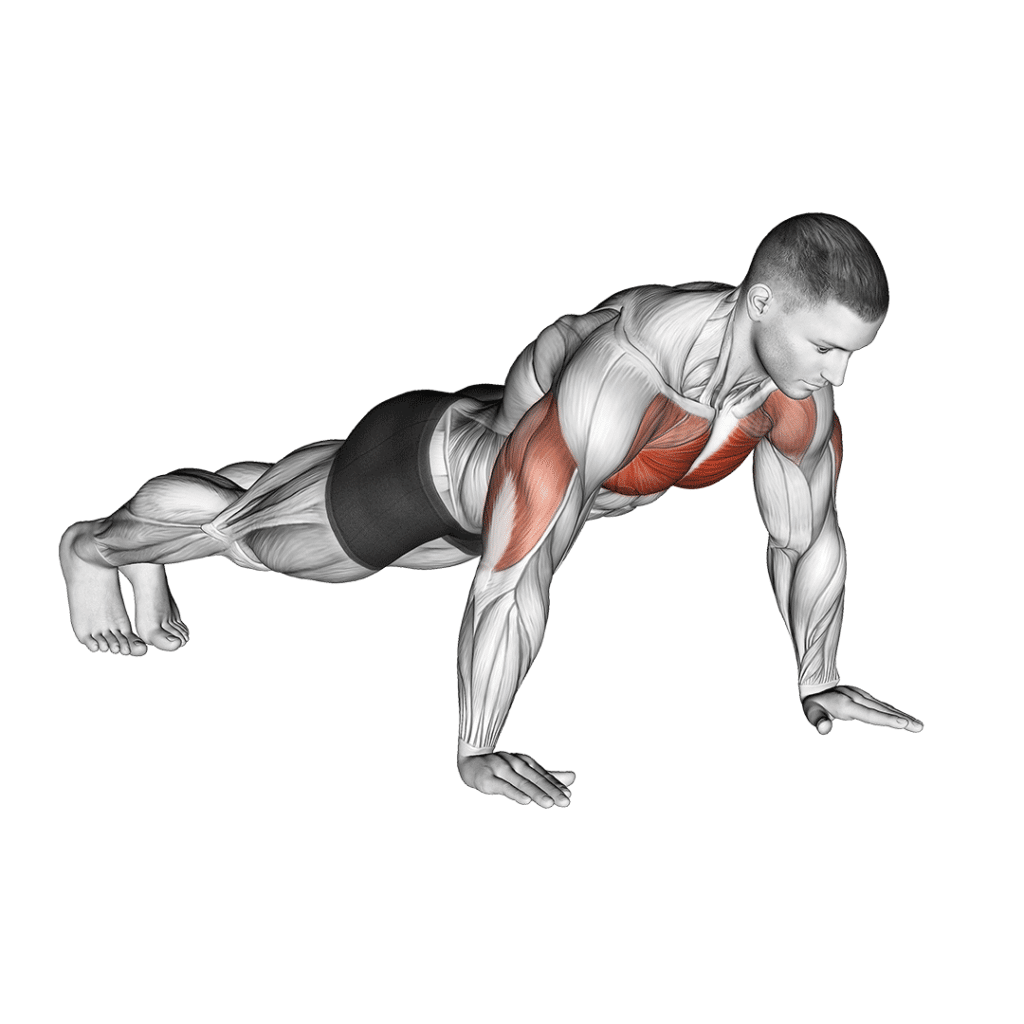
Push-ups are a fundamental bodyweight exercise that primarily targets the chest, shoulders, and triceps, contributing to a strong and well-defined upper body. This exercise is a testament to one’s upper body strength, as you’re pushing your entire upper body pushing muscles and weight against gravity.
Often hailed as the “king of chest exercises,” push-ups are a staple in military and training sessions, Crossfit WODs, and just about any strength and conditioning program you can think of.
Incorporating push-ups into your routine not only builds a strong and defined chest but also enhances shoulder stability and triceps development, making it a must-have in your push day arsenal.
How to do Push-Ups
- Begin by placing your hands on the ground, slightly wider than shoulder-width apart, with your fingers pointing forward.
- Engage your core and ensure your body forms a straight line from your head to your heels.
- Lower your body by bending your elbows, keeping them close to your sides, until your chest nearly touches the ground.
- Push back up to the starting position, fully extending your arms and squeezing your chest at the top.
- Take a moment, reset, and go for another rep.
Alternative Exercises
- Incline Push-Ups (feet elevated)
- Decline Push-Ups (hands elevated)
- Diamond Push-Ups (hands close together forming a diamond shape)
- Wide-Grip Push-Ups (hands wider than shoulder-width)
- Plyometric Push-Ups (adding a jump at the top)
Crafting Your Own Push Day Routine
When it comes to building strength and muscle, a well-structured push day routine is a must in your workout arsenal. But where do you start? Let’s break it down.
Understand the Basics A push day routine primarily targets your chest, shoulders, and triceps. These are your “push” muscles, the ones you use to push weight away from your body.
Start with Compound Movements Begin your routine with compound exercises. These are movements that work multiple muscle groups at once, giving you more bang for your buck.
- Bench Press: The king of chest exercises, it also works your shoulders and triceps.
- Overhead Press: A fantastic move for shoulder development, engaging your triceps and upper chest as well.
Add Isolation Exercises Once you’ve hit your compound movements, it’s time to focus on isolation exercises. These target one specific muscle group.
- Tricep Dips or Pushdowns: Great for sculpting those triceps.
- Lateral Raises: Perfect for hitting the side delts and adding width to your shoulders.
Don’t Forget About Progressive Overload Progressive overload is key to muscle growth. This means gradually increasing the weight or resistance over time.
Listen to Your Body Pay attention to how your body feels. If you’re experiencing pain (not to be confused with the normal discomfort of a workout), it’s time to reassess your form or the weight you’re lifting.
Rest and Recovery Rest is when your muscles repair and grow stronger. Make sure you’re giving your push muscles at least 48 hours of rest before hitting them again.
Muscles Targeted During a Push Day
When you’re hitting the gym for a push day, you’re focusing on the muscles that are involved in pushing exercises. These are primarily your chest, shoulders, and triceps. Let’s delve into each muscle group and understand the role they play in your push day workout.
Chest Muscles (Pectoralis Major and Minor): The chest muscles are a major player on push day. They’re involved in exercises like the bench press and push-ups. The pectoralis major, the larger of the two chest muscles, covers the front of your chest and is responsible for moving your arm across your body. The pectoralis minor, a smaller muscle located underneath the pectoralis major, helps to stabilize your shoulder blade.
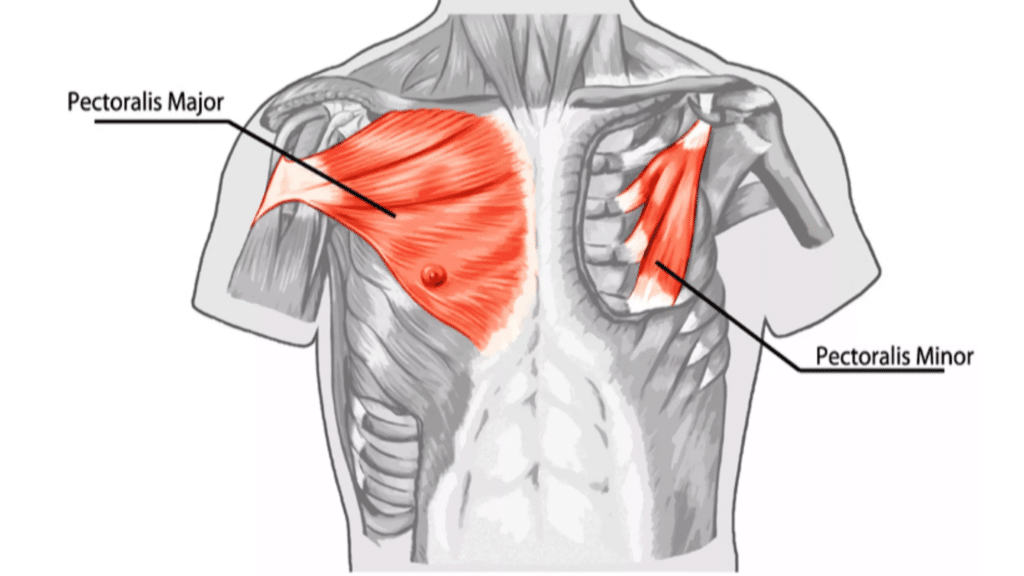
Shoulder Muscles (Deltoids): Your shoulders are made up of three main muscles: the anterior (front), medial (middle), and posterior (back) deltoids. On push day, you’re primarily working the anterior and medial deltoids through exercises like the overhead press and lateral raises. These muscles are crucial for lifting your arms overhead and to the side.

Triceps Brachii: The triceps, located at the back of your upper arm, are responsible for extending your elbow. They come into play during exercises like tricep dips and pushdowns. Strong triceps are essential for any pushing movement, as they work in conjunction with your chest and shoulder muscles to execute the movement.

Accessory Muscles In addition to the primary muscle groups, there are also several accessory muscles that are engaged during a push day workout. These include the trapezius, rhomboids, and serratus anterior. While they may not be the main focus, they play a supporting role in stabilizing your shoulders and upper back during push day exercises.
Common Mistakes on Push Days
Push day is a crucial part of any workout routine, targeting the chest, shoulders, and triceps. However, common mistakes can hinder your progress and even lead to injuries. Let’s explore some of these pitfalls and how to avoid them.
Neglecting Proper Form: One of the most common mistakes is neglecting proper form. This can lead to ineffective workouts and potential injuries.
- Impact: Poor form can place unnecessary stress on your joints and muscles, leading to strains or more severe injuries.
- Solution: Focus on mastering the technique before increasing weight. Consider working with a coach or using a mirror to check your form.
Overtraining: Overtraining can lead to fatigue, decreased performance, and injuries.
- Impact: Pushing your muscles too hard without adequate rest can result in overuse injuries and hinder your progress.
- Solution: Ensure you’re giving your muscles enough time to recover between push day sessions. Listen to your body and rest when needed.
Imbalance Between Push and Pull Exercises: Focusing solely on push exercises without incorporating pull exercises can create muscle imbalances.
- Impact: This can lead to poor posture, muscle strains, and an increased risk of shoulder injuries.
- Solution: Incorporate pull exercises into your routine to target the back and biceps, creating a balanced workout.
Ignoring Progressive Overload: Progressive overload is essential for muscle growth and strength gains.
- Impact: Without gradually increasing the weight or resistance, your muscles won’t be challenged enough to grow.
- Solution: Keep track of your lifts and aim to increase the weight or reps over time.
Skipping Warm-Up and Cool Down: A proper warm-up and cool down are crucial for preventing injuries and promoting recovery.
- Impact: Skipping these can result in muscle strains and a longer recovery time.
- Solution: Incorporate a dynamic warm-up and a cool-down with stretching to prepare your muscles for the workout and aid in recovery.
Nutrition and Recovery
When it comes to maximizing the benefits of your push day workout, nutrition and recovery play a pivotal role. Let’s explore how you can optimize these two crucial elements to fuel your gains.
Pre-Workout Nutrition: Fueling your body before a workout is essential to ensure you have the energy to perform at your best.
- What to Eat: Opt for a balanced meal that includes carbohydrates, protein, and a small amount of fat 2-3 hours before your workout. For example, a chicken breast with brown rice and vegetables.
- Hydration: Don’t forget to hydrate! Drink water throughout the day and have a glass 30 minutes before your workout.
Post-Workout Nutrition: Refueling after your workout is just as important to support muscle recovery and growth.
- What to Eat: Within 30 minutes to an hour post-workout, have a meal or snack that includes protein and carbohydrates. A protein shake with a banana or a turkey sandwich are great options.
- Hydration: Continue to hydrate by drinking water or an electrolyte drink post-workout.
Recovery Techniques: Proper recovery is key to prevent injuries and prepare your muscles for the next workout.
- Stretching and Mobility Work: Incorporate stretching and mobility exercises to improve flexibility and reduce muscle tightness.
- Rest and Sleep: Ensure you’re getting enough rest and quality sleep to allow your muscles to recover and grow stronger.
Active Recovery: Active recovery can help to reduce muscle soreness and improve overall recovery.
- What to Do: Opt for low-intensity activities like walking, swimming, or yoga on your rest days.
- Benefits: Active recovery can improve blood flow, reduce muscle soreness, and enhance overall recovery.
FAQs
What to do on push day?
On push day, focus on exercises that target the chest, shoulders, and triceps. Start with compound movements like the bench press or overhead press, followed by isolation exercises for each muscle group. Incorporate a mix of free weights, machines, and bodyweight exercises to challenge your muscles from different angles.
What are some good push day workouts?
Some effective push day workouts include:
– Bench Press or Dumbbell Press for the chest
– Overhead Press or Arnold Press for the shoulders
– Tricep Dips or Tricep Pushdowns for the triceps
– Lateral Raises for shoulder width
– Chest Flyes for chest definition
– Skull Crushers or Overhead Tricep Extensions for tricep development
How many exercises should I do on push day?
The number of exercises on push day depends on your fitness level, goals, and available time. A typical push day workout may include 4-6 exercises, with 3-4 sets of 8-12 reps each. Start with compound movements and then move on to isolation exercises. Ensure you’re giving each muscle group adequate attention while also allowing for proper rest and recovery.

